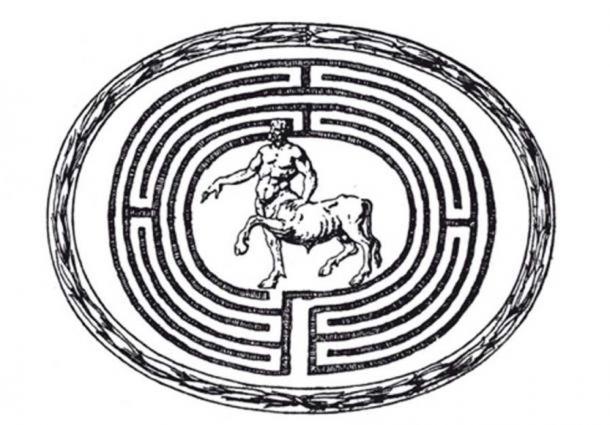
Dismembered Remains Tell Horrifying Tale of Ritual Human Sacrifice in Ancient Crete
In the distant past, earthquakes shook not only lands, but also the ancient perspective on how to interact with the world, the gods, and each other. During a recent lecture at the Archaeological Museum of Thessaloniki, an archaeologist also made her companions tremble – some in excitement and others with rage. The expert presented evidence supporting a practice which has created much controversy over the years - human sacrifice in ancient Greece.
The archaeologists and lead excavator in question is Maria Andreadaki-Vlazaki. Newsweek says she told her peers of a probable example of ritual human sacrifice which occurred at the ancient palace of Kydonia, on the Greek island of Crete.
The sacrifice of a young woman apparently took place as a reaction to an earthquake. It is suggested that the woman was sacrificed to appease the gods whom ancient inhabitants of the island believed were threatening them by sending the natural disaster.
- The Fearsome Wicker Man: An Eerie Way Druids Committed Human Sacrifice
- The Sunghir Burial Site: Were these Two Children Sacrificed in a Form of Prehistoric Scapegoating?
Andreadaki-Vlazaki has described the unsettling discovery of the young girl’s remains:
“What we expected was uncovered from under the stones in the eastern part: the skull of a young girl among animal skulls, but not whole however. It was cut up, like all the other bones. It was opened up exactly on the suture lines/joins, preceded by a sword cut on the right parietal and occipital bones, and then scattered among animal skulls (of at least two goats and a pig). It is true. The human skull had been cut up, perhaps the rest of the body as well and in the same way as the animals. The two parietals, the occipital and the frontal bones that have come to light are not shattered but opened up on their natural sutures and scattered. Close to them is the right lower jaw. It is a shocking image.”

The broken skull of a young girl was found among animal skulls. (Maria Andreadaki-Vlazaki via ANA-MPA)
Mrs. Andreadaki-Vlazaki, who is also the head of the excavations in the region, has provided a timeline to explain what may have happened in the ancient courtyard of the palace on Crete: first there was an earthquake between 6.5-7.5 on the Richter scale. The destruction of the earthquake was soon followed by a fire “that burned everything.” In reaction to the natural disaster, the people living on the island sacrificed the young woman, 43 sheep and goats, 4 pigs, and an ox. Their remains were all buried in the courtyard. Finally, an aftershock destroyed whatever was left.
Apart from the remains left by the sacrifice, excavators also found two Linear B tablets, a Minoan seal depicting the “Despotis Theron” (Master of the Animals) - a young man standing above a city, five pairs of wild goat horns, and four Kydonia-style vases dating to the early 13th century BC.

Finds from the Mycenaean palace of Kydonia. (Maria Andreadaki-Vlazaki via ANA-MPA)
Andreadaki-Vlazaki also explained the cultural context surrounding the human sacrifice:
“We cannot avoid mentioning human sacrifice in Minoan Crete. Finding the bones of the young woman, studying them, reassembling them on the skull, and observing their being split with a sharp instrument at their ‘seams’ in conjunction with ritual acts, should not be surprising, since Greek mythology has abundant examples of purifying sacrifices of virgins, in society’s effort to face a great disaster, in times of famine or other exceptional circumstances and often before the outbreak of war. The myths of virgins in the role of scapegoat, perhaps dating back to Mycenaean times, are presented as acts of deep submission and devotion to the divine, as acts of awe and purification, as a kind of negotiation with the supreme powers and not as savage and unscrupulous slaughter.”
Stories of human sacrifice in ancient Greece (and other regions) often tend to portray the victims as heading toward their fate willingly, generally the individuals seem to be presented as having a sense of fulfilling their duty.
- Shocking Discovery Shows Ancient Koreans were Sacrificed for Building Project
- Would You Dare to Visit an Ancient Maya Cave of Human Sacrifice? If So, Head to Belize
Ancient History Encyclopedia provides the example of King Minos of Crete forcing 14 youths, seven female, seven male, into his labyrinth. The deadly Minotaur awaited the virginal and beautiful young people. King Minos is said to have sacrificed the youths as a compensation for the death of his son. King Agamemnon is another character from ancient Greek legend who is said to have ordered for human sacrifice. In his case, the goddess Artemis ordered him to sacrifice his daughter Iphigenia as punishment for killing one of her sacred deer. Agamemnon was told that was the only way the goddess would set the winds free.

Engraving of the Minotaur in a labyrinth. ( Public Domain )
Although it makes sense that ancient Greeks would have practiced human sacrifice when they believed it necessary, as many other ancient cultures around the world also did, there are people who argue against the idea – often claiming that the Greek culture was too “civilized” to partake in such horrifying acts. Nonetheless, this is not the first time the controversial suggestion of human sacrifice in that time has been put forward.

Finds from the Mycenaean palace of Kydonia. (Maria Andreadaki-Vlazaki via ANA-MPA)
Top Image: Two views of the broken skull of a young girl who was a probable victim of human sacrifice. (Maria Andreadaki-Vlazaki via ANA-MPA) Some of the artifacts found at the Mycenaean palace of Kydonia. (Maria Andreadaki-Vlazaki via ANA-MPA)















